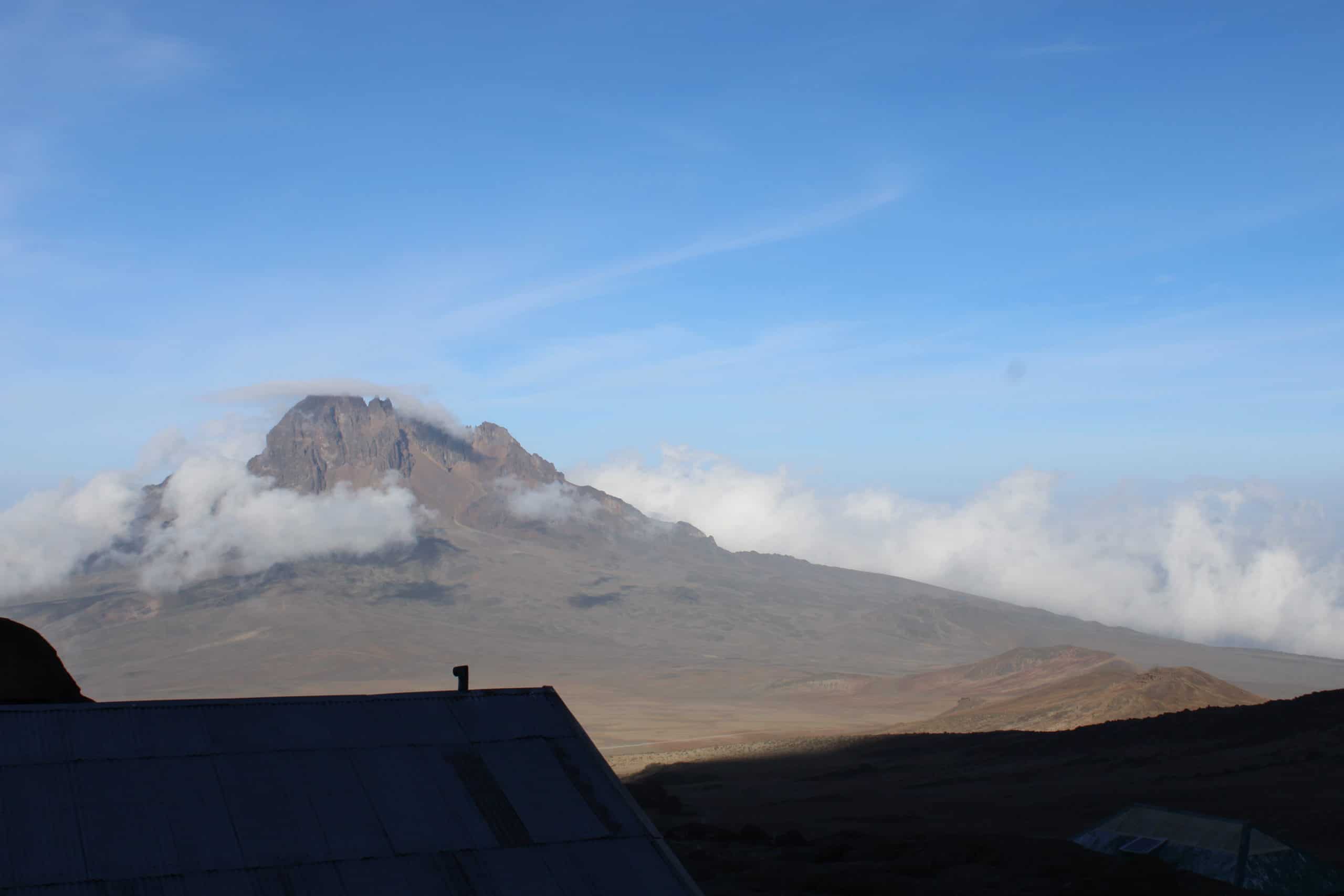At the peak of the pandemic, this writer found solace in Africa’s tallest mountain.
THE LIMBS ACHE WITH EVERY STEP AND THE inclement weather does not help. But the summit awaits and Kilimanjaro will not allow you to give up or slip up. For it is not physical stamina alone that will take you there;
your mental perseverance needs to match the might of this majestic mountain that you are on.
Climbing up Africa’s highest mountain, at almost 6,000 meters, means long days and longer nights, walking at one’s pace through forest and desert, through foliage and sand, with gusty winds intercepting any progress. The body almost gives up from the exhaustion of hiking rugged terrain for countless hours every day and fighting the freezing nights and altitude sickness. Medicine helps, but tenacity is the only real cure.
Tanzania’s pride, Mount Kilimanjaro, has been on my bucket list and having been vaccinated abroad, I decided to travel, training for the climb through a second lockdown, pushing my body to its limits.
Loading...
Come June and I was in Marangu, a small town in the Kilimanjaro region that’s a more established route with many hutments dotting the stretch ensuring you don’t need to sleep outdoors.
Opting for a six-day trek allowed extra time for acclimatization and with all equipment and crew, we were well prepared. The Marangu route normally attracts more climbers, but the pandemic has hit hard the lives of the people who depend on them for a living.
“The flow of incoming tourists is less than other years. Before per month, you would receive up to 25 people but now the demand has gone down to five people per month or none at all,” rued Cecilia Otto Mahala, the Director of Outsight Nature that organized my climb.
This was obvious from the beginning of the climb, with few support staff occupying the huts along the way. Those impacted by this decline in tourism include the cooks, porters, and guides that facilitate these treks as their lives depend on human footfall up the great mountain.
They are the core crew or the lifeline responsible for keeping climbers safe, sated, and alive with hot food and essential services otherwise not available on a mountain.
While death rates on Kilimanjaro are low, a climber cannot successfully complete the mission without guides to provide direction both physical and mental, or porters to carry items that may otherwise wear you down. There came a point during our trek when I could not even carry my own day pack because of how weary my body was.
“Most of the guides lost their jobs, especially those who were employed with tour companies. Other companies shut down their operations; it was difficult not only for them but also those who had families that rely on them… some had to find alternative economic activities,” added Mahala.
“As a tour operator, I faced tremendous loss. Most of the people are still afraid to travel, some come with a limited budget and still want to travel. This makes me run my business at a low cost, sometimes with no profit.”
While there were other climbers as we progressed up the mountain, they were mostly in small groups, and interaction with them was minimal. Opting for the Marangu route was not the easiest choice as it’s steep and difficult to navigate towards the end. But it’s scenic, covering the mountain’s many ecosystems.
After four days of relentless climbing – and thankfully, no altitude sickness – I was finally at the summit. Being on the highest free-standing mountain in the world, with the clouds and the clean, crisp air caressing my face, the sense of awe and achievement was incomparable.
From montane forest right out of a fairytale to dry alpine desert with killer winds and walking through glistening glaciers in the last leg, it is a journey that you undertake with nature.
Being cut off from civilization – and the internet – the climber spends a lot of time in the company of rare fauna and flora.
With the vaccine roll-out picking up across the world, things should hopefully start looking up for tourism in Africa and in these parts. The challenge will remain to protect those working in the local industry.
“I cannot say can say there is 99% positivity in 2021 but there is hope with the ongoing bookings till now… governments should make sure people follow all Covid protocols to minimize risks. This will make a better future for the tourism industry in 2022,” said Mahala, her eyes twinkling with hope looking up the face of a mountain that will continue to hold the world in awe.
BY INAARA GANGJI
Loading...
